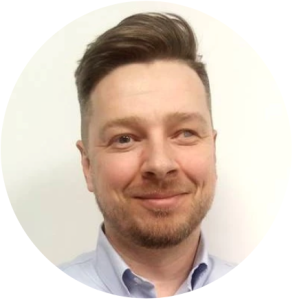If you would like to self-nominate for the TSC, please list your name, represented group, a short biography, and statement of intent for running.
For details on eligibility and mechanics, please see this page.
Election Timeline
The nomination period will be two weeks from the time that the nomination solicitation email is sent to both the Announce and Dev lists.
The election period will be two weeks from the time that the CIVS voting URLs are sent out.
In the event that there is any technical issue with either the lists.io email service or the CIVS service, the election coordinator may extend either period by up to one week without TSC approval. Any further extension will require TSC approval.
The nomination period for Chairperson will begin immediately following the conclusion of the TSC Election.
The self-nomination period will begin
The self-nomination period will end .
The TSC is responsible for:
Setting high level architecture goals and coordinating overall project architecture and technical direction
Selecting technology stack, software features and supported hardware including
Approving project or system proposals (including, but not limited to, incubation, deprecation, and changes to a sub-project’s scope);
organizing sub-projects and removing sub-projects;
Developing Project use cases;
Defining and monitoring Project technical processes and interfaces with third party code and external projects including creating sub-committees or working groups to focus on cross-project technical issues and requirements;
Overseeing the Infrastructure Working Group other TSC working groups;
Appointing representatives to work with other open source or open standards communities;
Establishing community norms, workflows, issuing releases, and security issue reporting policies;
Approving and implementing policies and processes for contributing (to be published in the CONTRIBUTING file) and coordinating with other project committees to resolve matters or concerns that may arise as set forth in Section 7 of this Charter;
Engaging in discussions, seeking consensus, and where necessary, voting on technical matters relating to the code base that affect multiple projects;
Setting target dates for software development and testing;
Coordinating any marketing, events, or communications regarding the Project with the Manager of LF Projects and the Marketing Advisory Council of the LF Networking Fund of The Linux Foundation (“LFN”);
Establishing a vetting process for maintaining security and integrity of new and/or changed code base and documentation, including vetting for malicious code and spyware; and
Establishing a security issue reporting policy and resolution procedure.
Template:
Name:
<photo>
Representative Group: <Commiter> or <Community>
Short Biography:
Statement of Intent:
Technical Representative Nominations:
Name: Szymon Krasuski
Representative Group: Technical
Short Biography: I am currently Software Engineer at CodiLime. For over 2.5 year I've been working with Tungsten Fabric. First developing SDWAN/multicloud with deployed TF on the top of that. There I had opportunity to learn how Tungsten Fabric cooperates with all three major cloud providers (AWS, GCP, Azure) and all nuances of TF depending on environment, operating system et al.
Afterward, I was developing for almost a year TF operator (known as contrail-operator at that time) for Openshift 4.x deployments.
There I was one of key engineers in development of vRouter and Kubemanager part to support multiple business scenarios (like standard CNI usage of TF, a well as Nested Deployment mode where Openstack together with Openshift are involved).
Currently, as TF Operator was officially released to Linux Foundation, I actively contribute writing documentation for TF Operator, but also writing code to make TF Operator even better (all in all I'm probably one of a few that knows all the nuances and secrets of this code). I'm eager to work with the community to make it easier and intuitive for others to use Tungsten Fabric.
I also actively take part in the community meetings, slack discussions or giving presentations at LFN events.
I also wrote multiple blog posts about different aspects of Tungsten Fabric published on CodiLime's website: https://codilime.com/blog/
Statement of Intent: I intent to simplify Tungsten Fabric which is a pretty complex project currently to enable everyone who wants to use or develop TF, to have smooth and nice experience with it.
Name: Szymon V. Gołębiewski
Representative Group: Community Committee
Short Biography:
I am a Senior Project Manager with more than 15 years of professional experience in project management. I've taken the role of a software engineer, front-end developer, Business Analyst, Product Owner, Scrum Master, and Project Manager in my career. As a product owner in a software house, I was an active member and helped expand the community of an open-source project called Liferay.
While working as a Juniper contractor for several years, I led the teams responsible for Contrail Command and Contrail Multicloud. Currently, I'm a PTL for Tungsten Fabric documentation (for half a year now) and have successfully prepared the first version of TF documentation. Due to my involvement in Juniper and Tungsten Fabric's work, I combine understanding for both parties' needs and limitations. I am counting that it will allow me to take care of the development of TF effectively.
Statement of Intent:
I want to help grow Tungsten Fabric as a fully transparent open-source project.
